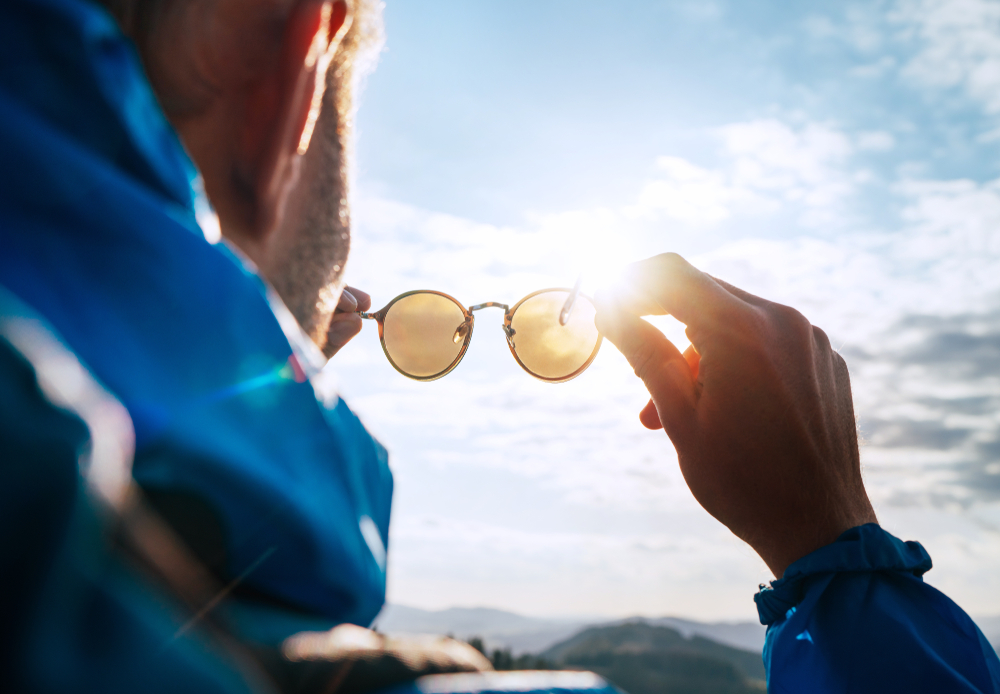
When we think about sun protection, sunscreen and hats are often the first things that come to mind. However, your eyes are just as vulnerable to the sun’s ultraviolet (UV) rays as your skin. Prolonged UV exposure can lead to serious eye conditions, including cataracts, macular degeneration, and even cancer of the eyelids. Protecting your eyes year-round is crucial for maintaining long-term vision health.
How UV Rays Affect Your Eyes
UV rays come from the sun and can damage both the surface and internal structures of the eyes. Even on cloudy days, UV radiation penetrates through clouds, making protection essential every time you step outdoors. Over time, repeated exposure can cause conditions such as:
Photokeratitis: Often described as a “sunburn of the eye,” this condition can be painful and cause temporary vision loss.
Cataracts: UV exposure accelerates the clouding of the eye’s natural lens.
Macular degeneration: UV damage can contribute to this leading cause of vision loss in older adults.
Sunglasses: Your First Line of Defense
Sunglasses are the most effective and convenient way to block harmful UV rays. They protect your eyes from potential damage and can significantly reduce the risk of long-term issues caused by sun exposure. When selecting a pair, look for 100% UVA and UVB protection. Labels should clearly state full protection from both types of UV rays to ensure maximum safety.
Wraparound frames are another great feature to consider, as they offer additional coverage by blocking rays that can enter from the sides.
Polarized lenses can be helpful for reducing glare from reflective surfaces, such as water or pavement, but they do not automatically provide UV protection unless specified. Transition lenses, which darken when exposed to sunlight, are another convenient option. They can provide continuous UV protection both indoors and outdoors, eliminating the need to switch between regular glasses and sunglasses.
Additional Ways to Protect Your Eyes
Sunglasses are essential, but they’re not the only way to protect your eyes from UV rays. Additional strategies include:
Wide-brimmed hats: A hat with at least a 3-inch brim can reduce UV exposure by up to 50%.
UV-blocking contact lenses: Some prescription contact lenses include a built-in UV filter for added protection.
Eye-safe sunscreen: Apply sunscreen to your eyelids and the skin around your eyes, where skin cancer is common.
The Importance of Year-Round Protection
UV exposure isn’t just a summer concern. Snow, sand, water, and even concrete can reflect UV rays, increasing exposure in every season. Make eye protection a daily habit, whether you’re spending a day at the beach or running errands on a cloudy afternoon.
Ready to Upgrade Your UV Protection?
Your eyes are precious, and protecting them from UV damage is one of the best ways to preserve your vision and overall eye health. By combining sunglasses with other protective measures, you can reduce your risk of developing serious eye conditions later in life.
Schedule a comprehensive eye exam with Bluegrass Vision Group to explore our selection of sunglasses and prescription lenses with advanced UV protection. Visit our office in Mount Sterling, Morehead, or Lexington, Kentucky. Please call (859) 498-4800, (606) 727-2800, or (859) 327-3701 to book an appointment today.








